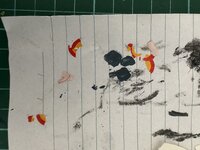SirFrancis
Airman 1st Class
- 179
- Feb 10, 2022
Hey guys
Finally completed my HA1109 Tripala. Just had to apply the decals.......and they basically disintegrated. Even while in the water soaking some started to break apart. I had no hope trying to apply them. Has anyone else had same issue with Amodel decals? If this is just a bad one off set of decals it would be cheaper to buy another kit and try those decals than buying aftermarket decal set.
Any suggestions?
PS I bought it online from Eastern Europe from memory so no hope of complaining.
Finally completed my HA1109 Tripala. Just had to apply the decals.......and they basically disintegrated. Even while in the water soaking some started to break apart. I had no hope trying to apply them. Has anyone else had same issue with Amodel decals? If this is just a bad one off set of decals it would be cheaper to buy another kit and try those decals than buying aftermarket decal set.
Any suggestions?
PS I bought it online from Eastern Europe from memory so no hope of complaining.



